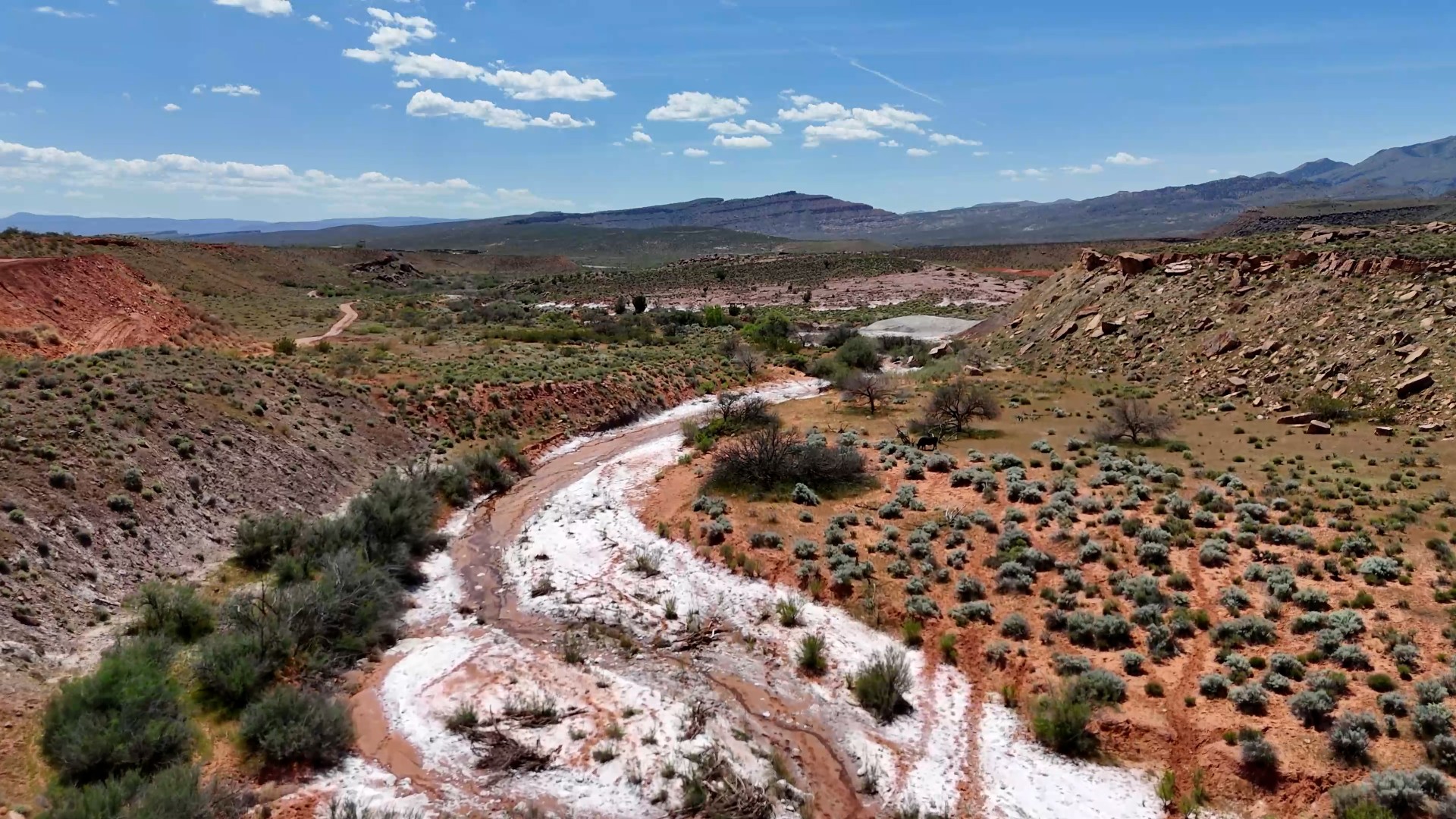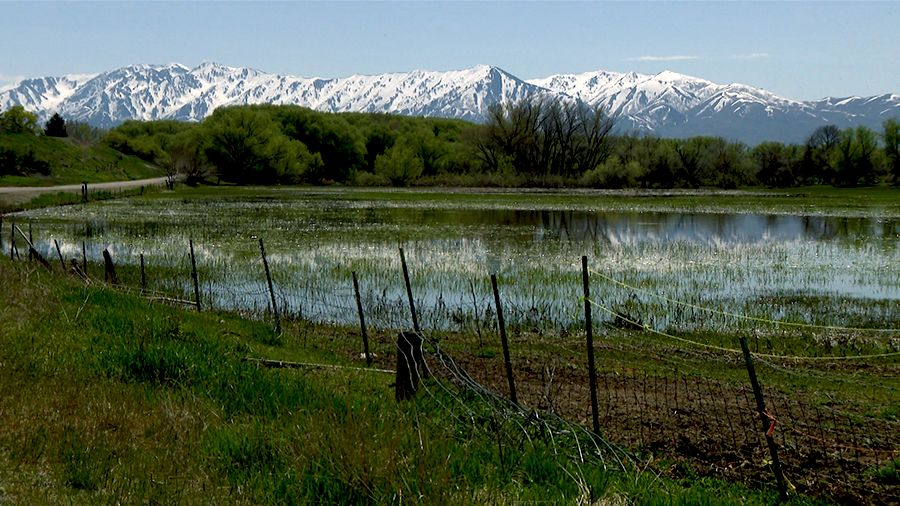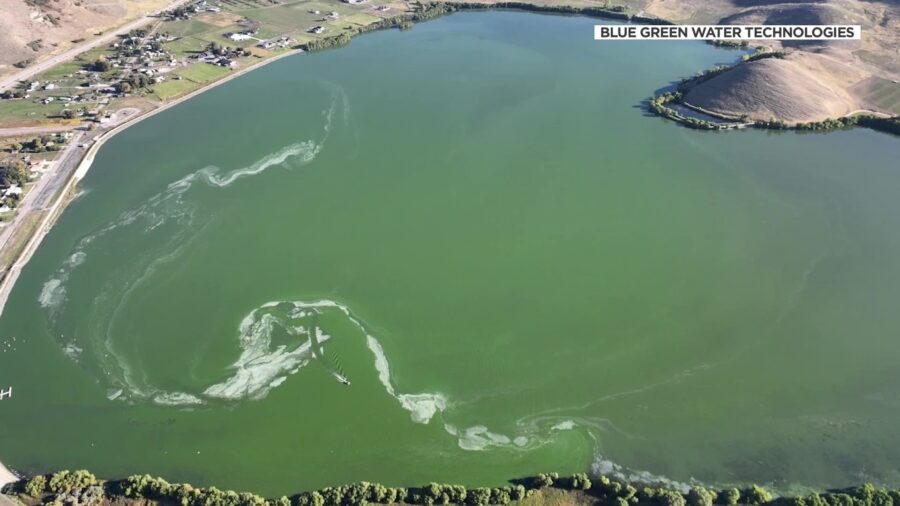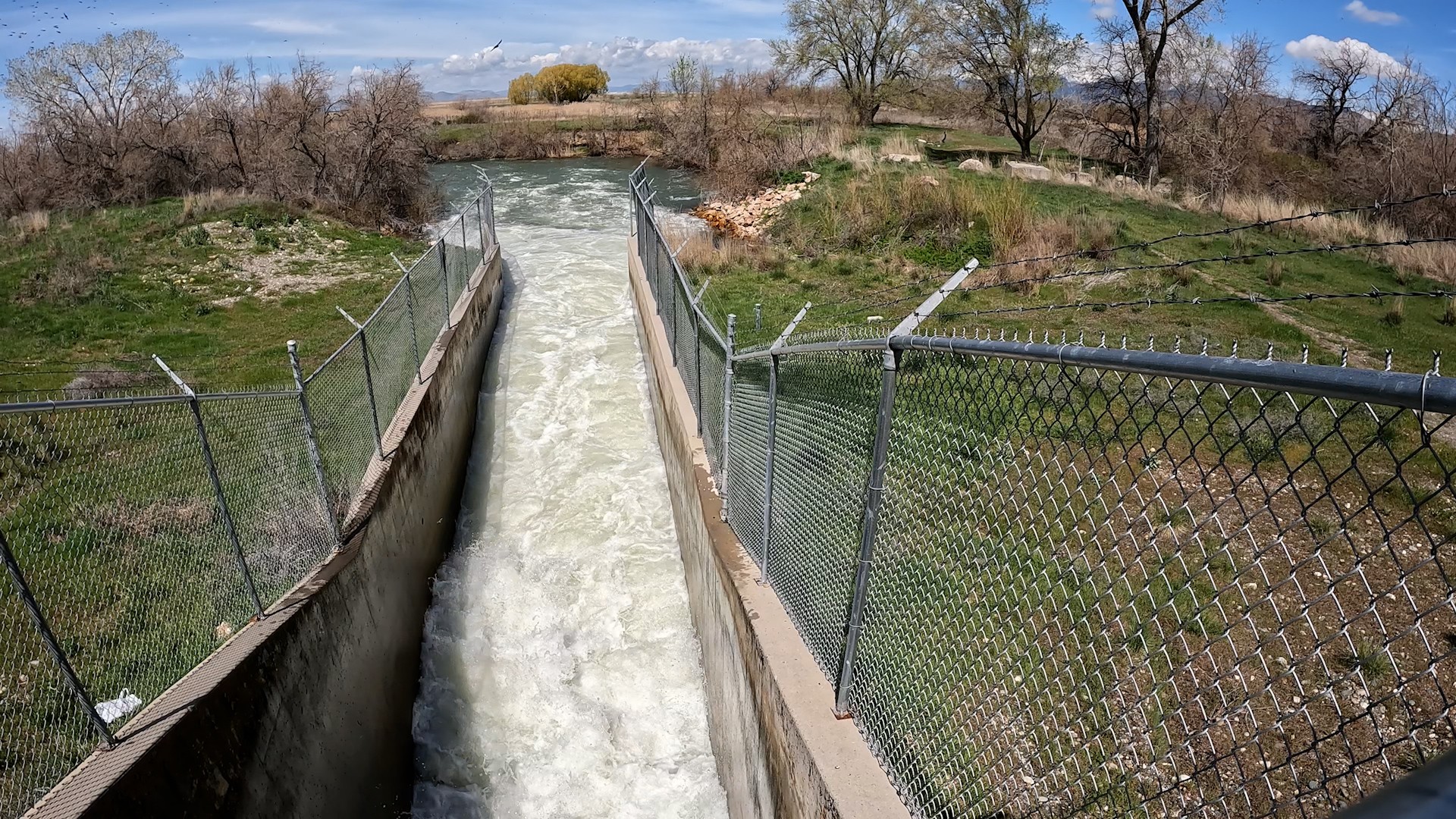Here’s how much Lake Powell is expected to rise this year
Mar 20, 2024, 9:47 AM | Updated: 9:47 am
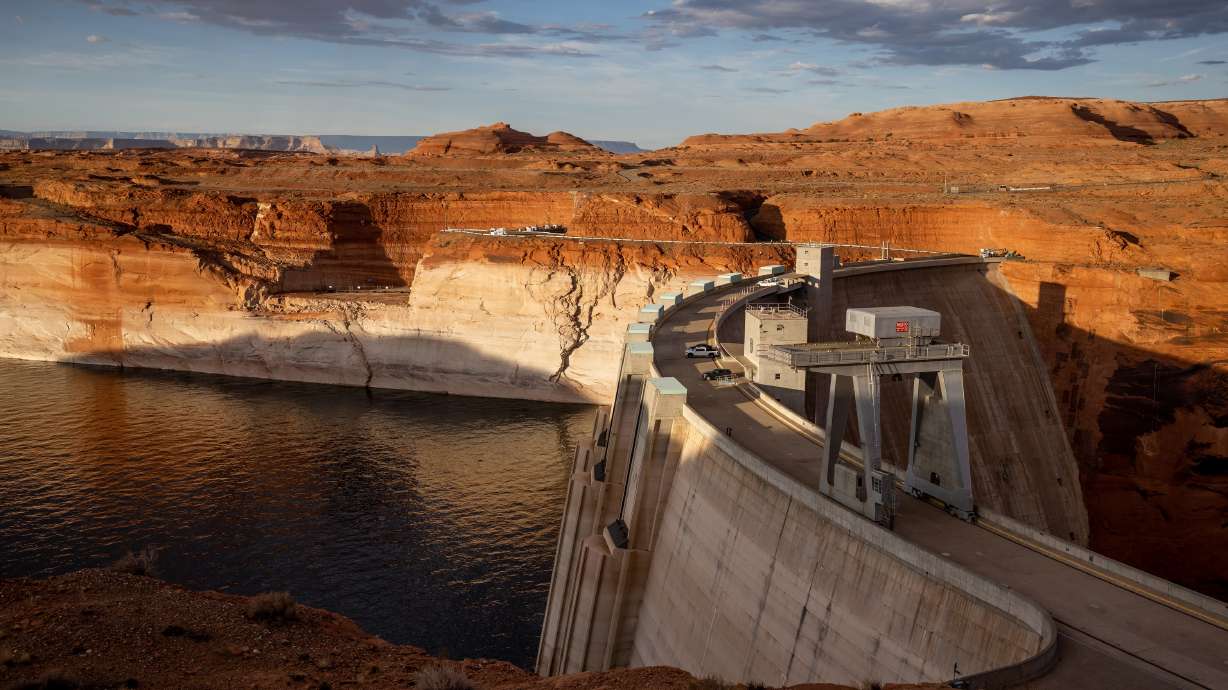
The Glen Canyon Dam holds back the waters of Lake Powell in Page, Arizona, on July 18, 2022. Lake Powell is expected to receive a decent bump in the coming months, but experts say it still has a "long way to go" after years of drought. (Spenser Heaps, Deseret News)
(Spenser Heaps, Deseret News)
SALT LAKE CITY — Lake Powell remains at the center of attention as the seven Colorado River Basin states figure out how much water is withdrawn from it this year and beyond.
But those who rely on it for water and electricity — and the millions who enjoy recreating on the reservoir — are equally focused on how much Lake Powell receives this spring.
The good news is, it is expected to receive a decent bump in the coming months. The bad news is, it’s not expected to reach the same levels it peaked at before the region’s latest severe drought.
Lake Powell is projected to receive about 5.4 million acre-feet of water based on conditions this winter, National Weather Service’s Colorado Basin River Forecast Center officials said on Friday. That would hoist the reservoir from 32% to 37% capacity after the snowmelt process wraps up in the early summer.
The reservoir gained about 65 feet in water levels last spring, jumping from 21% to 38% capacity following last year’s record snowpack. If this year’s projections come to fruition, it would also be close to the reservoir peak in 2021. It would also be much lower than the 2010s average peak.
However, experts explain the figure is a bit fluid, and several variables can adjust how high the reservoir reaches.
Additional water
The center’s projections are based on a possible inflow of 85% of normal. Snowpack levels are generally between 85% and 130% of normal across the Upper Colorado River Basin region, and 120% and 125% across the Great Basin, Colorado Basin River Forecast Center officials wrote in a water supply report Tuesday.
Officials clarified on social media the lower inflows are tied to drier conditions within the Green River and San Juan river basins, which flow into the Colorado River upstream of Lake Powell. They also said inflows were nearly twice the normal last year, which is why the reservoir gained so much in a short period.
Lake Powell is at 31% of capacity. Last year at this time, #LakePowell was ~ 21% of capacity. Inflow was almost 2x the normal amount last year which allowed the reservoir to peak at 38%. This year, inflow around 85% of normal will result in a projected peak of 37%. #drought pic.twitter.com/uB6NgnOSD1
— Colorado Basin RFC (@nwscbrfc) March 15, 2024
But the 2024 snowpack collection season isn’t over yet in the regions that matter most for Lake Powell, which may be the biggest variable. What has helped is “storm activity” has lingered across the Colorado River Basin and Great Basin this month after an above-normal February, Colorado Basin River Forecast Center officials wrote in a water supply report Tuesday.
“The water supply outlook has improved due to wetter than average weather during the first half of March,” the agency wrote, adding that the “water supply volumes are most favorable” in the Great Basin, including Utah.
Last week’s storm was also huge for areas near Lake Powell or upstream of it, including Colorado and southeast Utah. The Escalante-Paria snowpack basin, for instance, gained 3.3 inches of water from the storm, about a quarter of the region’s snowpack collection since Oct. 1, per Natural Resources Conservation Service data.
But Jordan Clayton, a hydrologist for the agency, said more would be needed to “move the needle” regarding Lake Powell’s rise this year. National Weather Service Climate Prediction Center outlooks note the river basin and Great Basin have some of the highest probabilities for above-normal precipitation to close out March, so that could help improve inflows.
The U.S. Bureau of Reclamation may release a more detailed Lake Powell projection after the snowpack collection season ends.
“We’ll take as much water up in the larger Upper Colorado basin as possible,” Clayton told KSL.com on Tuesday. “(Lake Powell) has a tremendously long way to go.”
Diversions
Clayton adds that bodies of water like Lake Powell are also harder to project because there are multiple diversions upstream and most reservoir or lake projections are based on snowpack data. While agencies try to account for depletion, there’s no way of knowing when someone will pull from the river and how much they will consume.
Conversely, projections typically don’t account for manmade measures that could boost inflows like controlled reservoir releases. Water managers upstream of Lake Powell could decide to release stored water into the Colorado, Green and San Juan rivers to avoid flood risks, which would add to the water that flows into Lake Powell.
Other factors
Some additional factors can change how much water ends up — or stays — in Lake Powell this year.
Warmer and drier conditions this spring could cause snowpack to melt early or create an inefficient runoff, which means less snowpack water may end up in rivers, streams and creeks that flow into Lake Powell.
“You lose a little bit of the water to upland areas and less of it makes it to the reservoir,” Clayton said. “So there are consequences for having more of a spread out runoff period.”
That was a fear with last year’s snowpack; however, the snowmelt process ended up being about as efficient as possible. It helped many reservoirs refill, while the state avoided widespread flooding.
Warmer and drier conditions during the spring and summer result in more evaporation, as well as withdrawals from Lake Powell or systems that flow into it. Long-range forecasts don’t offer much insight into what’s expected this summer, but some parts of the river basin have slightly higher odds for above-normal temperatures this spring.
The U.S. Bureau of Reclamation anticipates starting a plan for the Lower Colorado River Basin states to cut water consumption by at least 3 million acre-feet between 2024 and 2026. That may not factor much into Lake Powell’s peak this spring, but it could help reduce the amount pulled from the reservoir later in the year and prevent the reservoir from shrinking so quickly.
So it appears those who rely on Lake Powell should expect to see similar reservoir conditions as last year, but much more water is needed before it returns to levels before the latest severe drought.


